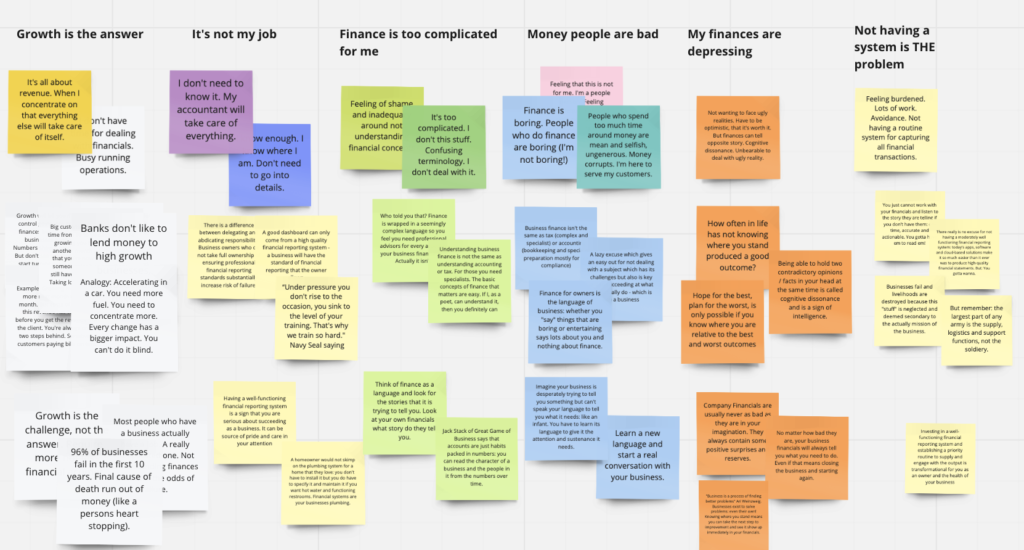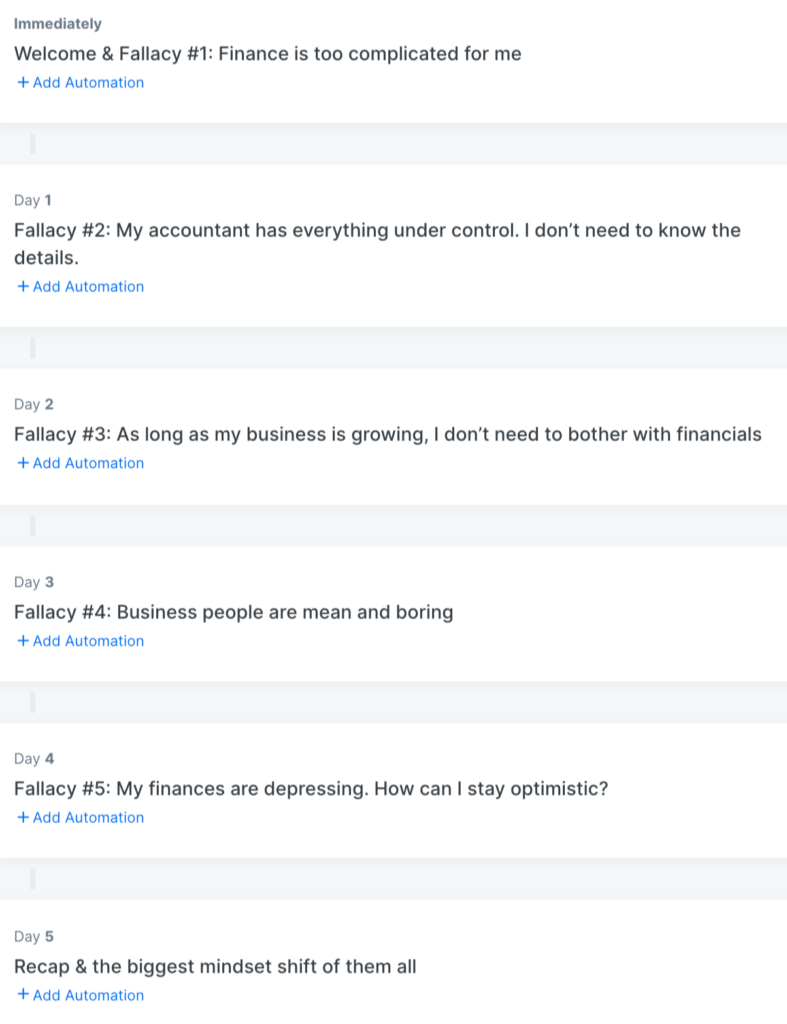Your email list is one of the essential assets in your business.
Unlike on Twitter, YouTube, Facebook, or any other social media, you actually own your list and decide when and how you communicate with them.
You’ve got the chance to build a relationship with your subscribers and win their trust. So, when the time comes that you want to launch a product, they’re way more likely to buy what you have to offer..
But how do you get people to join your list?
The answer is a lead magnet. A little freebie that promises something of value to your website visitors in exchange for their email address.
Now, when it comes to choosing the format and content of your lead magnet, it can get confusing. There are simply too many options.
Let me spare you the guesswork and show how you can create a simple email course as a lead magnet.
Why choose an email course as a lead magnet?
Lead magnets can be anything from a checklist to an ebook, a template, or a guide.
But how many of those have you already downloaded? I’ve got a ton sitting in my folders collecting digital dust. Very often, I was rather underwhelmed with what I received and didn’t end up using it.
If you’re anything like me, then you’d want your subscribers to actually look at what you’ve put together for them.
An email course is a great choice because…
- You only need your email service provider to deliver it (and you’ve already got that).
- You don’t need to invest time or hire someone to design a fancy PDF.
- You can adjust it quickly if needed.
- Most importantly, it gets people into the habit of opening your emails (and that’s what you want, right?)
What should your email course be about?
Remember, you’re going to give away your email course for free. And it also should provide value to your subscribers.
This is where it gets interesting. Online course creator Tiago Forte mentions that the price of a product should reflect the effort it takes to benefit from it.
You could give away concrete steps to implement something for free. But your subscriber needs to take concrete actions to benefit from it. The effort involved is much higher than zero. Following Tiago’s reasoning, this wouldn’t be fair to your subscribers.
So, instead of telling them exactly what to do or how to do it (which involves effort), tell them what to think first.
What do I mean by that? Well, the people opting in to your lead magnet aren’t necessarily ready to take action. They don’t know you yet. They don’t trust you yet. And they aren’t buying into your way of approaching the problem they’re trying to solve yet.
First, your subscribers need to realize and agree to certain beliefs and overcome any limitations and misconceptions that are holding them back.
The effort required for someone to internalize this new way of thinking is nearly zero. No actions needed. It’s just a matter of adopting a new mindset that’ll help them take the right actions later.
How to develop your email course
As I’ve now shifted your mindset on how to approach a lead magnet (see what I did there?), it’s now time to take action and develop yours.
You’ll see how to do that based on a real-life example: an email course I’ve developed together with Steven Wilkinson of Good & Prosper. The goal is to increase subscribers in preparation for the launch of his online course GLUE IT!, teaching entrepreneurs how to master their finances so their businesses can thrive.
There are 5 steps to developing your email course, which you could complete in about a day.
1. Brainstorm
As the first step, put your thinking cap on and brainstorm …
- Myths about the industry you’re in or about what’s needed to succeed in your space
- False beliefs about what’s important and who’s on your prospects’ side
- Misconceptions about the best way to solve their problem
- Limitations – self-imposed or real – that are holding them back
- Pitfalls your audience lands in when trying to solve their problem
This is best done as a collaborative brainstorming session. Don’t censor yourself in the beginning. Then start to organize your thoughts and group them together. Choose the top 4 to 6 to move forward.
We used Miro, a visual online whiteboard tool to brainstorm any myths, misconceptions, and limitations that business owners have with regard to managing their business finances.
Here is a screenshot of our Miro brainstorming board:

2. Write the emails
With your 4-6 items identified and your brainstorming notes in hand, you can start to write the email for your email course.
Here’s a 4-part framework to help you write each email:
- Name: Start the email by calling out the myth, misconception, or limitation your prospects are experiencing.
- Agitate: Agitate it and show how this way of thinking is not serving them.
- Reframe: State what’s actually true to introduce a new way of thinking.
- Benefits: Show how they can benefit from reframing the myth, misconception, or limitation.
Analogies are a useful tool to help your subscribers picture a new reality. They use familiar concepts to explain something that’s still unknown.
End each email with a short tease of what’s coming in the next one.
Here’s an example: (Can you spot the analogy we used?)
[Subject line] Fallacy #1: Finance is too complicated for me
Do you ever feel your eyes glaze over the moment you see a financial report? Have you ever walked out of a meeting with your accountant, tax advisor, or bookkeeper and felt like your head was spinning?
They’ve bombarded you for an hour with complicated financial terms and concepts. At least 80% of it was just confusing. But you didn’t dare to interrupt and ask for clarifications because you felt like you should know this.
Finance is often wrapped in a complex language that only professionals seem to understand. As a mere mortal, your natural reaction is to leave it to them and not get involved.
Here’s the thing…
Understanding business finance is not the same as understanding accounting or tax. For those you need specialists, sure.
The basic concepts of finance that matter are easy. And you don’t even have to be a numbers person to “get it.”
I’m certainly not a numbers person. I have a degree in German literature and stumbled into finance because I needed a job (for which my family said I was uniquely unqualified). If you’re interested in the whole story, you can find it here.
The point is … if I was able to make sense of finance and use it to my advantage, then you definitely can, too.
A powerful mindset that has helped me is to think of finance as a language.
Your business is desperately trying to tell you something. But much like an infant, it can’t communicate in words with you. You have to learn its language to give it the attention and sustenance it needs.
When you learn the language of finance, you can start a real conversation with your business.
And amazing things start to happen. Your business will tell you where to direct your attention. It will give you immediate feedback and never lie to you. Now, you can give your business the care it deserves.
This fluency in the language of finance allows you to understand not only your own but any business out there.
I know what you might be thinking now: “But my accountant has everything under control. I don’t need to know the details.”
In tomorrow’s email, I’ll show you why this false sense of security is very dangerous.
Until tomorrow,
Steven
3. Set up the automation in your ESP
Now you can create an automation so that your emails are delivered automatically to anyone who subscribes to your course. I’d recommend sending the emails one day apart from each other.
Here’s how the automation for our example email course looks like in Kajabi:

4. Create a landing page for your audience to opt in
Your ESP should give you the option to create a landing page to promote your email course and collect your prospect’s email addresses.
These are the elements you should include on your landing page:
- Headline: What they will get in your email course.
- Who’s this for: Call out your audience.
- Bullets: Tease them with what they’re going to learn in your course.
- Your bio: Show why you’re the best person to teach them and why you can be trusted.
- Form: This is where they’ll fill in their first name and email address.
- Call-to-Action: The button they need to click to opt-in. Make it enticing!
Here you can find the landing page for Steven’s email course: The 5 Business Finance Fallacies That Are Limiting Your Potential.
Want to see more examples?
Check out Cam Houser’s free email course about the era of video: Why now is the perfect time to leverage the power of video to grow your business and accelerate your career.
Or Robbie Crabtree’s free email course about performative speaking: 5 Lessons To Wow Any Audience.
5. Promote your email course
Without this last step, all effort was for nothing. You need to get the word out about your free email course.
3 ways to do that:
- Include opt-in forms directly on your website, for example, on the homepage, and below each blog post.
- Promote your landing page on social media networks like Twitter and LinkedIn.
- Send people there manually whenever you feel someone can benefit from your course.
And that’s all you need to know for now!
Did you use this guide to create an email course? I’d love to see it. Send me the link to your landing page at julia@juliasaxena.com.






